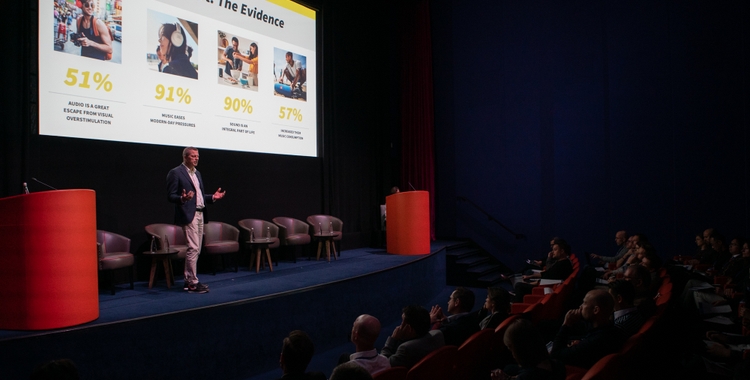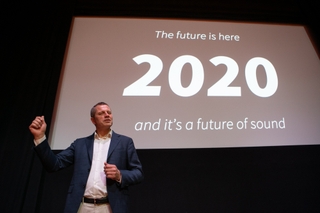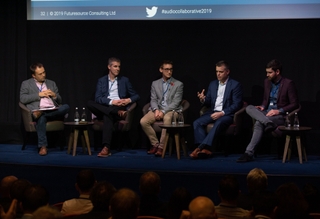



The HARMAN team made a big splash at the recent Audio Collaborative, Europe’s premier event for consumer audio, pro audio and entertainment industry professionals. Carsten Olesen, President of Consumer Audio, presented the Keynote on the Future of Listening while Bill Wyman, Vice President of Car Audio Marketing, participated on a panel on the Future of Audio in Automobiles.
Take a look at some of the findings Carsten presented from our consumer research on the ‘Future of Listening’.
The Emerging Sonic Revolution
More and more, listening is becoming an essential focus of our daily lives. And as we enter 2020, we are about to turn a corner into a sound-first era, what we at HARMAN are calling the “Decade of Sound.” How do we know this? Let’s take a look at some compelling findings from a recent study HARMAN and Futuresource Consulting conducted with more than 8,000 consumers across six countries concerning “The Future of Listening”:
91% Believe music eases everyday pressures
90% Consider sound an integral part of life
57% Report their music consumption has increased compared to a year ago
*Source: Harman “Future of Listening” Report, August 2019.
We aren’t the only ones to pick up on this trend. A recent Spotify study confirmed that the majority of Millennials and Gen Zs believe audio offers a vital escape from today’s visual overstimulation.[1] And “The Big Comeback of Audio” was celebrated at the Advertising Week 2019 Convention in New York earlier this year.

Technology as the Catalyst
We see a growing demand for personalized audio experiences that are immersive, intimate, and fine-tuned by the listener. And the technology acts as a catalyst for this change, offering people unlimited ways to experience sound. Consider the explosive growth of podcasting – the medium has firmly crossed into the mainstream as more than half of Americans over 12 have listened to one. And then there is the rise of smart speakers, the fastest-growing tech sector in the U.S. Nearly one-third of American households have one and almost every smart speaker owner has more than one device.
From Sonic Freedom Today to AI and VR Experiences Tomorrow
Another way technology is fueling the audio revolution: it has literally unleashed the sound experience from any sort of tether. Streaming services like Spotify and Apple Music mean sound is no longer dependent on a carrier medium or dedicated device. Instead, listening has become mobile and on-demand. Like an invisible companion, sound is no longer dependent on a carrier medium or dedicated device. Instead, listening has become mobile an on-demand. Like an invisiable companion, sound accompanies us wherever we go, without interruption.
In the future, the distance between the listener and sound will shrink even more. How so... ?
Even in the Face of These Changes, Quality Remains Key
Despite the notion that today’s listeners have sacrificed quality for convenience, our research shows that sound quality matters to them very much. Good sound quality triggers positive emotions such as a sense of the music coming to life, feeling uplifted or feeling relaxed, while bad quality triggers negative emotions such as dissatisfaction, annoyance or disappointment. Moreover, survey respondents confirm that the make it or break it role of sound quality in enjoying music is likely to grow over the coming years. With more moments of focused listening, the Decade of Sound will demand flawless audio quality.

Are You Ready for This Sound-First Decade?
After years of visual dominance, people are now ready to enter a new era – the Decade of Sound. Technology is a powerful enabler for this shift as it intensifies and diversifies how we listen.
HARMAN has placed our focus on the listening experience for more than 70 years. And our products and innovations will contribute to the Decade of Sound – from award-winning, wireless Bluetooth speakers and true wireless headphones to multi-room home audio systems or branded audio systems in the car to intelligent advanced technologies for sound recording and reproduction.
The future is here. And it’s a future of sound. Are you listening?
[1] Spotify for Brands “Culture Next” report, Vol. 1, 2019.